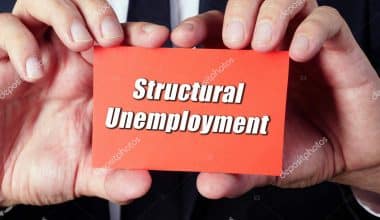Oftentimes, people wonder what economic profit entails, how to calculate it, its relationship with accounting profit, and economic profit example. This article gives an in-depth explanation of these, as well as an economic profit formula and calculator. Read on to find out.
What is Economic Profit?
An economic profit is a difference between the income a business has received from the sales of its inputs and the costs of its inputs, as well as any opportunity cost.
It is the difference between the total revenue and the total implicit and explicit costs of a firm. Put in another way, it is the extra profit that remains after considering the next best alternative investment. This can be either positive or negative in value.
Economic profit is the result of subtracting both explicit and opportunity costs from revenue.
Opportunity costs are the profits that a business misses out on when choosing between alternatives.
Economic profit is used for internal analysis and is not required for transparent disclosure.
Overview
To understand economic profit, you can analyze it in conjunction with accounting profit. Accounting profit is the profit a company shows on its income statement. Accounting profit measures actual inflows versus outflows. It is part of the required financial transparency of a company.
On the other hand, you can not record economic profit on a company’s financial statements, neither can you disclose it to regulators, investors, or financial institutions. It is a type of conditional analysis. Companies and individuals may choose to consider it when they are indecisive about production levels or other business alternatives. Hence, it can provide a proxy for foregone profit considerations.
Economic Profit vs Accounting Profit
You should not confuse economic profit with accounting profit, which is a firm’s revenue minus its explicit costs. Explicit costs are what most people think of as regular business expenses. These are actual payments made to others for running a business, such as paying rent, wages, utilities, and purchasing IT equipment.
Basically, an economic profit considers both the firm’s implicit and explicit costs. On the flip side, an accounting profit only considers the explicit costs which appear on a firm’s financial statements.
It also includes implicit costs, which are the opportunity costs equal to what a business or individual gave up in order to do something else. These costs are deducted from revenues and are the alternative returns you choose not to pursue. Adding implicit costs to your profit calculation gives you another way of comparing financial alternatives.
Positive vs Negative Economic Profit
A negative economic profit implies that you could be financially better off by engaging in a different opportunity. On the other hand, a positive one implies that there are no available or comparable opportunities that are more financially profitable. This is because you have already factored those into your calculation.
Opportunity Cost
An essential implicit cost to take into consideration when setting up a business is the opportunity cost of the financial capital. Let’s look at this example. Assuming you have $300,000 in your savings account which you can use to set up your bakery business. The bank provides a 4.5 percent interest rate, compounding monthly, which means that if you leave your money in your savings account, you could earn $12,594 in a year. The opportunity cost of your savings is this amount. Although it does not matter when computing accounting profit, it’s essential when working out the economic profit.
From an economic perspective, we often view economic profits in conjunction with normal income, because both of them consider a firm’s implicit costs. A normal profit is a profit that is necessary to cover both the implicit and explicit costs of a firm and the owner-manager or investors who fund it. In the absence of this profit, these parties would withdraw their time and funds from the firm. Alternatively, they put them to better use, as to not forgo other juicy opportunities elsewhere. In contrast, an economic profit is an excess income that remains after both the implicit and explicit costs are covered.
How Economic Profit Works
It arises in non-competitive markets and has significant barriers to entry, such as Monopolies and Oligopolies. The inefficiencies and lack of competition in these markets create an environment where firms can set prices or quantities, instead of being a price-taker, which occurs in a perfectly competitive market. In a perfectly competitive market, when firms attain a long-run economic equilibrium, an economic profit becomes non-existent. This is because there is no incentive for firms to either enter or leave the industry. Competitive and contestable markets
Only in the short run can a firm in a perfectly competitive market make an economic profit.
Economic profit does not occur in a perfectly competitive market once it has reached a long-run equilibrium. If it was available, there would be an incentive for new firms to enter the industry. This could be aided by a lack of barriers to entry until it no longer existed. When new firms enter the market, the overall supply increases. Furthermore, these intruders are forced to offer their products at a lower price to entice consumers to buy the additional supply they have created and to compete with the incumbent firms. As the incumbent firms within the industry face losing their existing customers to the new entrants, they are also forced to reduce their prices.
Practical Example
Here is a practical example. An individual firm can only produce at its aggregate production function. Which is a calculation of possible outputs and given inputs; such as capital and labor. New firms will continue to enter the market until the price of the product deflates to equal the average cost of producing the product. After you accomplish this feat, perfect competition exists and economic profit becomes unavailable. Economic agents outside the industry will then consider it valueless to enter the market, as a result of the absence of economic profit. Therefore, the supply of the product stops increasing, and the price charged for the product stabilizes, settling into an equilibrium. The same is likewise true for the long-run equilibria of monopolistically competitive industries, and more generally any market which is held to be contestable.
Normally, a firm that introduces a differentiated product can initially secure temporary market power for a short while. At this stage, the initial price the consumer must pay for the product is high, and the demand for, as well as the availability of the product in the market, will be limited. In the long run, however, when the profitability of the product becomes consistent, and because there are few barriers to entry, the number of firms that produce this product will increase.
A sneak peeks at the economic profit formula and example will bring more clarity.
Economic Profit Formula
Here’s how you can write the formula for calculating accounting and economic profit just in case you need to tackle problems as seen in the examples below:
Accounting Profit = Total Revenues – Explicit Costs
Economic Profit = Accounting Profit – Implicit Costs
Another way people write this formula is: Economic Profit = Total Revenues – (Explicit Costs + Implicit Costs)

How to Calculate Economic Profit
Since we know the meaning of economic profit, let’s see how to calculate it.
economic profit = total revenue – total opportunity cost
economic profit = total revenue – (explicit costs + implicit costs)
where:
total revenue is your total income or gain;
explicit cost is the cost that requires you to spend money; and
implicit costs are the cost that doesn’t require you to spend money.
Economic Profit Example
Let’s look at a typical economic profit example.
Assuming you invested $20,000 of your savings to start a tax preparation business. In the first year, you bring in $65,000 in revenue. Your accounting profit would be $45,000, which is $65,000 revenue minus $20,000 in explicit costs.
Now, let’s also assume you could have taken a job at a tax preparation firm and earned an annual salary of $35,000. Here, this $35,000 salary is your lost opportunity cost or implicit cost. To compare options, see if you can figure out how to use the simple economic profit formula to find out if you were better or worse off opening your own business.
Your economic profit, in this case, would be $45,000 (accounting profit) – $35,000 (salary), which results in a $10,000 economic profit. You are $10,000 better off as a result of opening your own business.
If your salary would have been $60,000 instead, how do you think it would have turned out? Your economic profit would be $65,000 – ($20,000 + $60,000) = -$15,000, or $15,000 worse off as a result of going into business your first year.
The above economic profit example gives more illustration on the topic.
Economic vs Normal Profit
We also refer to normal profit as a break-even or zero economic profit. It basically includes the profits you would pay to the entrepreneur (included in total cost, for bringing in scarce resources and taking risk). Total cost is equal to total revenue.
Furthermore, a firm making normal profits will remain in the industry. A firm will only exit the industry if it is making losses in the long run.
However, if total revenues exceed total cost then the firm will make supernormal profits. Profits encourage firms to be more competitive, reward entrepreneurs, and allow better distribution of scarce resources.
The enterprise component of normal profit is the profit that a business owner considers necessary to make running the business worth his or her time, i.e., it is comparable to the next-best amount the entrepreneur could earn doing another job. In particular, if the production process does not include the enterprise, you can also view it as a return of capital for investors.
Economic Profit Calculator
An economic profit calculator is a tool that helps one to estimate profit from an economic standpoint. If you apply the already given formula, you might be able to make better economic decisions in certain situations.
Economic Profit Model
Economic Profit Model: C+I+ G=Y (GDP/GNP)
Where, C= consumption expenditure, I = Investment expenditure, G=Government expenditure, and Y=National income.
The economic profit model is the sum of goods and services produced in a country over a specific period of time, usually a year. There are three approaches to computing the national income /profit of a country or economy per se.
They are The income approach, expenditure approach, and output approach.
Economic Profit Formula Importance and Applications
It is critical to recognize that economic profit and accounting profit are not the same things, and neither can be used as a substitute for the other. Economic profit differs from accounting profit in that it incorporates the influence of opportunity costs, which is the value that a company or individual has given up in order to pursue something else.
It is now feasible for a business to have a positive accounting profit while having a negative economic profit, indicating that the individual would be better off financially if he or she stopped the current business operation and pursued a different opportunity. On the other side, if a firm is able to generate a positive economic profit, it implies that the individual should continue with the current business activity because it is producing higher returns than alternative opportunities.
What Is Economic Profit Example?
If a person quits his job where he earned $50,000 and invested $200,000 to start a business. At the end of the business year, he made a total revenue of $240,000. His accounting profit/explicit costs is $40,000, while his economic profit is the accounting profit plus the salary he was supposed to earn. The economic profit is calculated as $240,000 minus (accounting cost +the salary he would have earned ).
How to Calculate Economic Profit?
Simply, to calculate economic profit = Total Revenue minus Total Cost ( explicit cost + implicit cost). That is TR-TC.
What Is the Difference Between Economic Profit and Accounting Profit?
Accounting Profit is the profit gotten after operating costs have been deducted from the total revenue earned. While, Economic Profit is the profit after operating cost and opportunity costs have been deducted from the total revenue received.
What Is an Profit Calculator?
The profit calculator is a tool used to estimate profit from the perspective of economics.
Conclusion.
Economic profit is total revenue minus operating costs and opportunity costs. Operating cost are cost that are directly incurred by the business. they are often referred to as explicit costs. Opportunity cost on the contrary, are “forgone alternatives” i.e. what was given up to get something else in the course of conducting a business. They are often referred to as implicit costs. One of the several ways on how to calculate profit is through the use of a profit calculator. An individual quits his job to start a business. He makes a profit of $20,000. His forgone salary and the $20,000 made from the business is the profit. This is an economic profit example.
Economic Profit FAQ’s
What is meant by economic profit?
The difference between the revenue gained from the sale of an output and the costs of all inputs used, as well as any opportunity costs, is defined as an economic profit or loss. Economic profit is calculated by deducting opportunity costs and explicit costs from revenues earned.
How do you calculate economic profit in perfect competition?
Profit is defined as the difference between a company’s total revenue and total cost. The revenue of a firm functioning in a perfectly competitive market is computed as follows: Total Revenue = Price * Quantity. AR (Average Revenue) = Total Revenue / Quantity.
What is negative economic profit?
When the cost of equity capital exceeds the accounting profit, the firm has a “negative economic profit.” This means that a company might have both a positive accounting profit and a negative economic profit at the same time.
How does economic profit differ from net income?
The main distinction is that economic profit includes a capital charge, which is the cost of using all capital. In contrast, net income includes a charge for utilizing debt capital (interest) but no charge for using equity capital.



